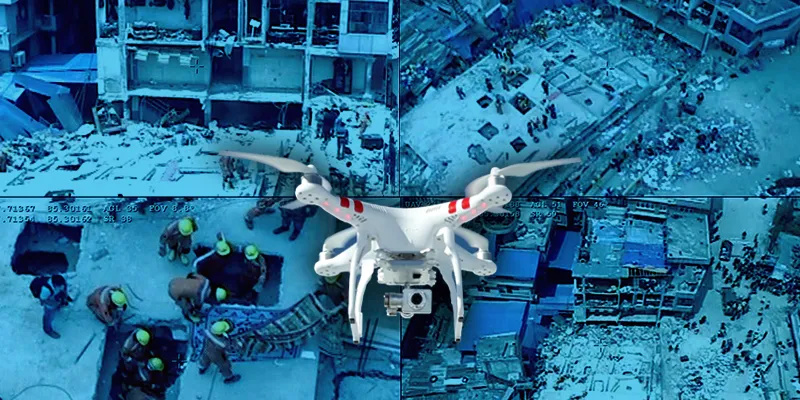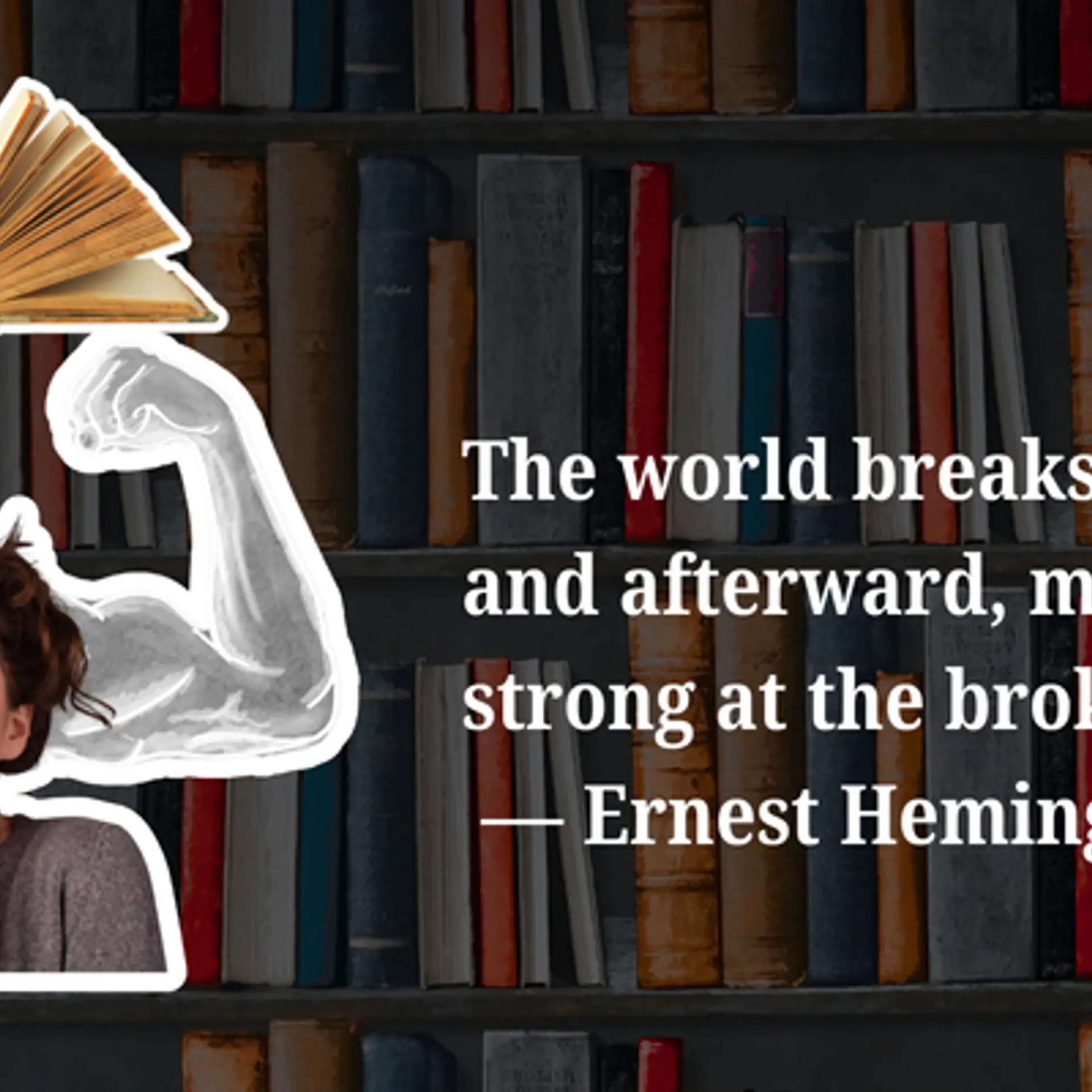Startups deploy eyes in the sky to aid search and rescue

The floods in Chennai have brought to the fore the importance of effective disaster management. In the past few years, a handful of startups have come up in in this space, and they're now using the new technology to help out during disasters like the Uttarakhand floods of 2013 and Nepal earthquake earlier this year. YourStory looks at startups working on helping out the authorities, especially search and rescue teams, with disaster relief and other similar missions.
Volunteering for a cause
Startups in aviation field have assisted security forces the most during recent calamities. While conventional helicopters may not be able to land everywhere, UAVs (drones) are virtually unconstrained and can get a lot closer to the actual situation to provide high-quality imagery if satellite imaging is unavailable.
Shinil Shekhar, co-founder of AirPix, a Mumbai-based drone solutions provider, says: “Drones can help a lot in disaster management. Using them during times of natural disasters is not much different from what we generally do, and it would help solve a problem to support the authorities and the public.”
UAVs and the information they gather also helps get a clear picture – literally – of the situation on the ground in areas that are inaccessible otherwise. Ankit Mehta, Co-founder of ideaForge, says: “We sent two teams to fly UAVs in Uttarakhand during the 2013 floods, because state agencies have only limited sources and they tend to focus on situations that have come to their attention. We can scan the entire vicinity, including the blind side of rubble.” ideaForge had volunteered with the National Disaster Response Force (NDRF) for rescue operations in Uttarakhand during the devastating floods of 2013.
Amardeep Singh, earlier with ideaForge (and now Co-founder at NexGear), adds that such technologies help save time and manpower. “The local administration was working with different agencies but needed more coordination. Our UAVs could look for survivors in such cases, and once the UAV spots them, you can send in a helicopter to the nearest accessible spot and organize a rescue mission,” he explains.
By 2014, the NDRF had bought their product, and ideaForge was again part of the search operations following a landslide in Malin village near Pune, in which 200 people were trapped. “Flying a drone will help you see which side you can approach from,” Amardeep added.
Apurva Godbole, CEO of Drona Aviation, agrees. Although Drona has not been a part of rescue operations yet, they often work with the Mumbai Fire Brigade. They also interact with government departments to find out how they can help in rescue operations. Apurva believes that more apps are needed for disaster management. Drona has trained a few Fire Brigade personnel in operating their UAVs. “We are working with government agencies till the laws (on UAV usage) become clearer,” says Apurva. Drona is now working on surveillance-specific drones to gather intelligence.
Handicaps in technology
During the Uttarakhand floods, AirPix had volunteered its drones for data collection. “Media attention waned after a point, so NGOs were not getting enough funding for relief work. We made data available, especially for inaccessible areas,” recalls Shinil.
However, when it's raining, using UAVs may not help as visibility is poor. “It is possible afterwards to get images after the rains and get details on the areas affected by flood. We can do 3D re-constructions of an area and use the data collected to plan drainage,” Shinil adds.
Even with all the technological advances, the current situation in Chennai proved to be of a much larger scale than what these startups could work with. Many are therefore now working on improving their technology. For instance, Airpix is working on customised solutions and ideaForge is looking to improve the capability of their flagship product, NETRA, to cover larger areas.
Ankit Mehta, Co-founder of ideaForge, says: “Currently, our UAVs can fly as far as 5km and can hover for up to 50 minutes. We are now creating technology for police forces for image-based surveillance, both from an aerial and an on-ground perspective.” But ultimately, it’s about the forces creating more standard operating procedures (SOPs), he adds. For situations like the flooding in Chennai, the main problem is that there is no SOP to follow. Ankit says that it is very difficult to know what to do during an emergency without SOPs in place.
Further, the lack of connectivity during disasters makes it difficult even for security forces and rescue teams to communicate effectively. Amardeep suggests: “Telecom companies can help set up mobile towers and signals to quickly create a communications centre.”
Prukalpa Sankar, Co-Founder of data aggregator SocialCops, agrees. “We developed the ‘Collect’ app to work without Internet connectivity because of this issue. It doesn't need much memory, can work on low-cost phones to gather data coming from remote areas,” she says.
Prukalpa points to another big problem – that of transporting relief materials. “We have optimized ecommerce logistics chains in the country. For example, Amazon delivers even in the interior areas of Maharashtra. Such strategies can be leveraged to organise the supply chain,” she says. SocialCops works with 120 organisations, including government agencies, NGOs, and corporates who can provide efficient supply chain in remote areas. “We can make better decisions through high-quality, updated data that is optimised and searchable. We have field staff at 40 million data points, even in remote areas for (on-going) data collection,” she adds.
In fact, SocialCops deployed their data platform in Chennai during the floods, so that volunteers can map out where the worst damage is. Partnering with Bhumi NGO, they are providing better data on how to rectify the damages. “This data will be displayed on a live map of Chennai – showcasing issues, damage and volunteers of Bhumi who can intervene,” Prukalpa said.
YourStory take
The Chennai floods have driven home the point that looking for solutions after disaster strikes is not the right answer. Amardeep voices a critical point when he says that the latest disaster management strategies – incorporating the latest available technology – need to be widely adopted at the local level, and not just at the headquarters of the NDRF.
Rajendra Ladkat, a disaster management and equipment consultant based in Pune, says that even children can make safety equipment which will be useful in disaster situations. What's needed is information and awareness. “Schools and offices need to conduct awareness programmes on what to do in case of landslides and earthquakes. If this had already been done in Chennai, people would not have been so badly affected, or at the very least, would have had the necessary equipment at home,” he says. Rajendra's ‘Sanjeevani’ kit has been used by National Disaster Response Cell for the Nasik Kumbh Mela, during the Uttarakhand floods and the Nepal earthquakes. The kit, which contains an activated carbon mask, a neck belt and a suction apparatus kit, among other things, is used by volunteers. They also have a floating stretcher that can be used to carry dead bodies in an enclosed manner so as to prevent odour. Such solutions need wide distribution and adoption, and only government agencies have the kind of authority and reach to make it happen. Startups have shown their willingness to step up – is the government listening?







